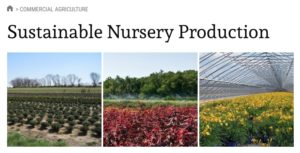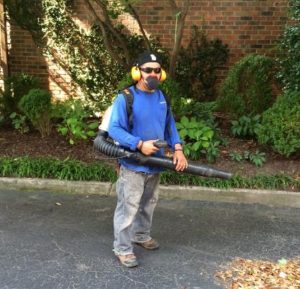Landscape, Ornamentals, Nursery, and Turf Edition
Seasonal updates on ornamental, nursery, and turf pests.
Subscriptions are available via EMAIL and RSS.
Companion Website Links:
 Rutgers Turf Blog - Articles on turfgrass diseases and cultural practices for the commercial turfgrass industry. Subscription available via RSS.
Rutgers Turf Blog - Articles on turfgrass diseases and cultural practices for the commercial turfgrass industry. Subscription available via RSS.
 Rutgers Weather Forecasting - Meteorological Information important to commercial agriculture.
Rutgers Weather Forecasting - Meteorological Information important to commercial agriculture.
UPDATE: Paraquat Training for Certified Applicators NOW AVAILABLE IN SPANISH
Sustainable Nursery Production Website Updates / Join Our Nursery Grower Email List

Please visit (click on links) the Rutgers Sustainable Nursery Production website for the following:
Join our Nursery Growers email list: please email Brandi Williams at brandiwi@co.cumberland.nj.us to stay connected during this time of COVID-19 social distancing and beyond. We will only email you important nursery industry related materials.
Voice your needs: please complete the 2020 Nursery Industry Survey to help the new nursery agents align their programmatic efforts to the needs of our communities.
Get information: view or download the missed 2020 South Jersey Nursery Meeting presentations (PDF).
Watch: visit the Rutgers NJAES video channel for educational content.
We need your input as this website is for you! Please feel free to contact us with ideas, suggestions, discrepancies, and thoughts on website improvements.
Please note: The Sustainable Nursery Production website will be rapidly expanding with new instructional videos, recorded webinar sessions, and commercial nursery production resources, serving as a key resource to our New Jersey grower communities. Additional sections such as commonly used forms will also be updated soon.
The new RCE nursery agents: Bill Errickson (Monmouth) and Timothy Waller (Cumberland) are focused on bringing new and updated Rutgers branded educational materials (fact-sheets, recommendations, videos, etc) to the forefront in an effort to better serve our growers.
Thank you for participating!
Contact Us:
Timothy J. Waller (website improvements)
County Agent
Rutgers Cooperative Extension of Cumberland County
291 Morton Ave.
Millville, NJ 08332
856-451-2800
twaller@njaes.rutgers.edu
Brandi Williams (Nursery Growers email-list)
Agriculture and Natural Resources Secretary
Rutgers Cooperative Extension of Cumberland County
291 Morton Ave.
Millville, NJ 08332
856-451-2800
brandiwi@co.cumberland.nj.us
COVID-19: PESTICIDE EXAMS CANCELLED **NJDEP ALERTS **
New Requirements for Continued Registration of Paraquat
Pesticide Storage Inventory Due May 1st: Download Rutgers Templates
April 10: Governor Murphy’s EO 122 – Impacts to the Landscaping Industry
NJ Governor Murphy’s Executive Order 122 pertaining to non-essential construction and landscaping as of Friday, April 10, 2020:
• Maintenance including cutting grass, weed wacking and leaf blowing (including cleanups) Permitted
• Install patios, walkways, pools, etc – NOT PERMITTED, unless project has begun before Friday 4/10 at 8:00 pm or there is an emergency fix to the front walkway
• Install plantings, including flowers and shrubs – Permitted
• Install irrigation systems – NOT PERMITTED, unless project has begun before Friday 4/10 at 8:00 pm. System startups and emergency repairs are permitted.
• Perform pruning and trimming – Permitted
• Provide weed and pest control services – Permitted
• OK Put down mulch or top dress – Permitted
• Install sod or seed lawns – Permitted (however, note that irrigation systems cannot be installed, so this would be at the discretion of the company if they can properly irrigate).
In addition, there is a limit of 5 crew members on site at all times. Masks (or some type of facial covering) and gloves must be worn and p rovided by company to employees. Start times and lunch times should be staggered to avoid employees having close contact. Previous social distancing rules still apply. Employees/customers must keep six feet apart at all times except when workers must do a task together.
rovided by company to employees. Start times and lunch times should be staggered to avoid employees having close contact. Previous social distancing rules still apply. Employees/customers must keep six feet apart at all times except when workers must do a task together.
